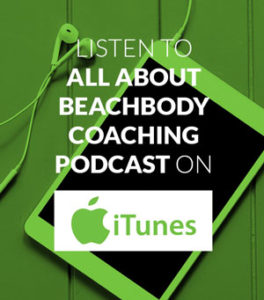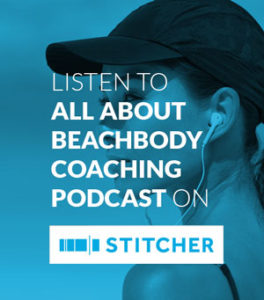
EP05 Create a Business to Serve your Life Part 2
In the second part of Create a Business to Serve your Life we are going to talk about each of the lifestyle elements that you need to consider prior to selecting the small business model that is right for you. We will also discuss the pros and cons of each business model as it relates to the life style considerations of income, time, location, stress level, knowledge and interests.
In the first episode of this 3-part series ‘Creating a Business to serve your Life’ we reviewed the first we reviewed steps 1 – 3 of my 6-step process to create a business that serves your life, rather than conforming your life to a business. Step 1 is to understand the definition of passive income and how it works. Step 2 is to understand the 4 different business models (Big Business, Investor, Sole Proprietor and Small Business Owner). Small Business owner is the only one we will focus on for the purposes of creating a life you love to live because it has the greatest potential to create passive income with the lowest barriers to entry. Step 3 is to understand the 7 types of small business (Sole Proprietor, Traditional Small Business, Franchise, Affiliate, Network Marketing, Content Creator and Real Estate).
Step #4 Understand the Type of Lifestyle and Commitment you are seeking with your Business
It is important to answer the following questions about the type of life that you want to live before identifying the small business model that is right for you. This will help you to understand the type of lifestyle and commitment that you want for your business.
The first question to consider is about INCOME:
· How much income do you want and need for the lifestyle that you want to live?
· What is your income goal? What is your number?
· How soon do you want to earn that income?
· What would be your ideal growth projection?
· What type of income would you like to earn? Passive or earned?
· What type of longevity are you looking for?
· Is your income compounding?
The next piece to consider is TIME:
· How many hours a day would you like to work?
· What type of hours will you carry? (For example: working at night, 3 hours a day 7 days a week or 2 long days)
· How will the beginning of starting your business look compared to the middle and end?
· Are you going to work part-time or full-time?
The third piece is LOCATION; really think about what type of environment best suits your working style:
· Is your office virtual? Or do you need an office?
· Is your business local? Or International?
An important component that is often overlooked is your STRESS LEVEL:
· How do you react to stress? Give yourself a score from 1 – 10 on how you handle stress.
· Do you operate best in high-pressure situations? Or does your stress level need to be low for you to be creative?
· How will your stress level impact your quality of life with your family, friends, etc…?
When thinking of creating a business it is important to build a business around something that you are passionate about and really consider your INTEREST:
· What are you passionate about? What could you talk about for hours?
· What could you write 100’s of blog posts or record 100’s of podcasts about?
· What are you challenged by?
· What will bore me over time?
The final component to consider is what you know…your KNOWLEDGE. If you can find an intersection with knowledge and interest that is the place to start:
· What do you already know a lot about?
· What could you learn more about all day and not get bored?
Step # 5 Understand the Pro’s and Con’s of each Business Model based on the Lifestyle Associated with Them
For each of the 7 types of small businesses there are pros and cons related to the life style considerations that we discussed in step 4.
INCOME
Sole Proprietor:
· How Much = Limited by Hours Worked
· How Soon = 3 – 6 Months
· Growth = Limited
· Passive or Earned = Earned
· Longevity = Dependent on Hours Worked
· Compounding = No
Traditional Small Business:
· How Much = Limited by Hours Worked
· How Soon = 3 – 5 Years
· Growth = Growth Potential Over Time
· Passive or Earned = Earned
· Longevity = Dependent on Type of Business
· Compounding = No
Franchise:
· How Much = Limited by Hours Worked
· How Soon = 3 – 5 Years
· Growth = Growth Potential Over Time
· Passive or Earned = Earned
· Longevity = Dependent on Parent Company
· Compounding = No
Affiliate:
· How Much = Unlimited Potential
· How Soon = 3 – 6 Months
· Growth = High
· Passive or Earned = Earned
· Longevity = Unlimited
· Compounding = Yes
Network Marketing:
· How Much = Unlimited Potential
· How Soon = 1 – 2 Years
· Growth = High
· Passive or Earned = Passive
· Longevity = Unlimited
· Compounding = Yes
Content Creator:
· How Much = Limited by Hours Worked
· How Soon = 1 – 20 Years
· Growth = Growth Potential Over Time
· Passive or Earned = Earned
· Longevity = Dependent on Quality of Content
· Compounding = No
Real Estate:
· How Much = Limited by Hours Worked
· How Soon = 1 – 20 Years
· Growth = Growth Potential Over Time
· Passive or Earned = Earned
· Longevity = Dependent on Quality of Content
· Compounding = No
TIME:
Sole Proprietor:
· Hours Per Day = 10 – 12 Hours per day 6-7 days per week
· Full-Time or Part-Time = Full-Time
Traditional Small Business:
· Hours Per Day = 10 – 12 Hours per day 6-7 days per week
· Full-Time or Part-Time = Full-Time
Franchise:
· Hours Per Day = 8-10 Hours per day 6-7 days per week
· Full-Time or Part-Time = Full-Time
Affiliate:
· Hours Per Day = 6-8 Hours per day 5 days per week
· Full-Time or Part-Time = Part-Time
Network Marketing:
· Hours Per Day = 2-3 Hours per day 5 days per week
· Full-Time or Part-Time = Part-Time
Content Creator:
· Hours Per Day = 6-8 Hours per day 5-7 days per week
· Full-Time or Part-Time = Full-Time
Real Estate:
· Hours Per Day = 6-8 Hours per day 5-7 days per week
· Full-Time or Part-Time = Full-Time
LOCATION:
Sole Proprietor:
· Virtual or Office/Brick & Mortar = Office
· Local or International = Local
Traditional Small Business:
· Virtual or Office/Brick & Mortar = Office
· Local or International = Local
Franchise:
· Virtual or Office/Brick & Mortar = Office
· Local or International = Local
Affiliate:
· Virtual or Office/Brick & Mortar = Virtual
· Local or International = Could be either/both
Network Marketing:
· Virtual or Office/Brick & Mortar = Virtual
· Local or International = Could be either/both
Content Creator:
· Virtual or Office/Brick & Mortar = Virtual
· Local or International = Could be either/both
Real Estate:
· Virtual or Office/Brick & Mortar = Office
· Local or International = Local
STRESS LEVEL:
Sole Proprietor:
· STRESS LEVEL (1 LOW – 10 HIGH) = 8
· Available 24/7 = Yes
Traditional Small Business:
· STRESS LEVEL (1 LOW – 10 HIGH) = 10
· Available 24/7 = Yes
Franchise:
· STRESS LEVEL (1 LOW – 10 HIGH) = 7 – 10
· Available 24/7 = Yes
Affiliate:
· STRESS LEVEL (1 LOW – 10 HIGH) = 8
· Available 24/7 = No
Network Marketing:
· STRESS LEVEL (1 LOW – 10 HIGH) = 5
· Available 24/7 = No
Content Creator:
· STRESS LEVEL (1 LOW – 10 HIGH) = 5 – 10
· Available 24/7 = No
Real Estate:
· STRESS LEVEL (1 LOW – 10 HIGH) = 10
· Available 24/7 = Yes
It is also important to consider how each of these types of small business models best serves your knowledge and interests. It is important to be consistently challenged by the business that you are developing.
Links:
Keith Callahan – Monthly Reports




